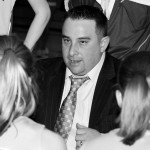By Ben Markley
Any student who has ever dreamed about taking finals in their underwear knows the effect dreams can have, but what are dreams and how do they affect us?
Patti Ward, adjunct professor psychology, said the psychological purpose of dreams is practical survival.
“You feel like you’re just starting the movie, but [dreams are] the brain’s way of staying alive,” she said. “The brain is a thinking machine. If you’re not thinking, you’re brain-dead.”
The brain goes through five stages of sleep in 90-minute cycles. One of the stages is known as Rapid Eye Movement (REM) sleep, where the eyes move, heart rate changes and brain activity increases. This is when dreaming occurs.
Despite various theories of Sigmund Freud and Carl Jung about dream interpretation, Ward said modern psychology does not recognize symbolic meanings in dreams.
“People are more interested in things that they can’t explain,” she said. “I think people will always be interested in parapsychology—ESP, being able to tell the future, premonitions—but because it cannot be proven scientifically, we do not recognize it in psychology.”
While psychologists do not think dreams have symbolic meanings, Ward said our dreams do tend to manifest things we fear.
“In our culture, you can’t go around saying ‘I’m scared’ all the time, but that fear is in there, so when you’re dreaming you’ll often inadvertently process what you’re not expressing when you’re awake,” she said.
Dream content comes from two places: the hippocampus, where long-term memory is stored, and the imagination.
“You don’t know what you don’t know, so what you have in your brain can pop in your dreams just because your long-term memory is working,” she said. “If you have creative dreams, it’s either coming from your memory of creative or gory things you’ve watched, or you’re just a creative person.”
Chad Sanner, chair of polysomnography/sleep technology, said the brain is far from asleep in the dream state.
“During these REM periods, the brain becomes more activated than while you’re awake, so you experience all these senses,” he said.
Not everyone experiences dreams the same way.
“Most people will experience visual sensations, some will experience auditory,” Sanner said. “It’s fairly rare to experience things like smell, taste and pain in dreaming.”
However, Sanner said the senses are not the only things involved in dreams.
“We think that heart rate and respiratory rate are linked to what a person dreams about,” Sanner said. “They’ve done nightmare studies where they hook up individuals with recurring nightmares, and they find that the heart and respiratory rate will gradually increase with the intensity of the nightmare.”
This engagement of body and mind has been noticed not only by psychologists but also philosophers. René Descartes, a French philosopher of the 17th century, discussed dreams in his famous work Meditations on First Philosophy.
“Descartes’ central question is, ‘What, if anything, can I know with absolute certainty?’” said Dawn Gale, associate professor of philosophy. “He recognizes that most, if not all, of his knowledge comes from or through senses, and he wants to know if there’s any reason to doubt them.”
Descartes’ answer comes through the nature of dreams.
“He saw that some of his dreams were so realistic at the time he was having them that he was convinced he was doing what he was dreaming about,” Gale said. “If we can’t distinguish dream from reality at least some of the time, that calls all of reality into question.”
Sanner said dreams can be so realistic that the brain routinely paralyzes the body to keep the dreamer from acting out the dream and injuring themselves. However, some suffer from REM Behavior Disorder, where this paralysis fails.
“A lot of the time, the reason [people with the disorder] go to their doctor is that their bed partner gets hit at night,” he said. “In some rare cases, people can actually get up and run into things.”
Another phenomenon involving this paralysis is one Sanner said most people will experience at least once in their lifetime.
“You start to wake up out of a dream, but you can’t move, and your body remains paralyzed even after the brain is awake,” he said. “You may even be able to open your eyes and look around the room, but you still can’t move your body.”
Whatever the meaning or manifestation of dreams may be, Ward said everybody has them and needs to have them, from college students to babies in the womb.
“We’re dreaming before we’re even born,” she said.
Contact Ben Markley, staff reporter, at [email protected].















































